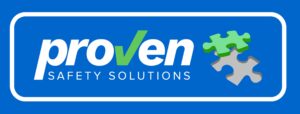If you are tired of issues getting swept under the carpet or arising out of nowhere then maybe you need to assign responsibility to more people.
Assigning responsibility for safety to every level of management in an organisation is a proactive approach that brings numerous benefits. Here are several key advantages:
Culture of Safety
When safety is a shared responsibility across all levels of management, you are better able to foster a culture of safety within the organisation. This means that safety becomes a core value ingrained in the company’s ethos, rather than merely a set of rules and regulations to be followed. Employees are more likely to prioritise safety in their daily activities when they see their leaders doing the same.
Positive Reputation
A strong safety culture can enhance the organisation’s reputation both internally and externally. Internally, it promotes trust and confidence among employees, leading to stronger teamwork and collaboration. Externally, it can attract top talent and customers who prioritize safety when choosing where to work or do business. A positive safety reputation can also differentiate the organisation from competitors and contribute to long-term success.
Enhanced Employee Engagement
When employees see that their managers are actively involved in promoting safety, it can boost morale and engagement. Employees feel valued when their well-being is prioritized by management, leading to higher job satisfaction and retention rates. Additionally, involving employees in safety initiatives and decision-making processes empowers them to take ownership of their safety and contribute ideas for improvement.
Improved Communication
Assigning responsibility for safety at all levels encourages open communication channels regarding safety matters. Managers are more likely to communicate safety-related information effectively to their teams, such as updates on safety procedures, hazard identification, and incident reporting. This facilitates a feedback loop where concerns can be addressed promptly, leading to continuous improvement in safety practices.
Risk Reduction
With safety being a priority for every level of management, there is a greater focus on identifying and mitigating risks within the organisation. Managers are more attuned to potential hazards in their respective areas of responsibility and are proactive in implementing measures to reduce these risks. This proactive approach helps prevent accidents and injuries, ultimately saving the organisation from costly liabilities and downtime.
Increased Accountability
Holding every level of management accountable for safety sends a clear message that safety is not solely the responsibility of frontline workers or safety officers. It reinforces the idea that everyone within the organisation plays a role in maintaining a safe work environment. As a result, managers are more likely to take proactive measures to address safety concerns and ensure compliance with safety protocols.
Legal Compliance
Assigning responsibility for safety at every level ensures that the organisation remains compliant with relevant safety regulations and standards. By actively involving management in safety oversight, the organisation demonstrates its commitment to meeting legal requirements and upholding industry best practices. This reduces the risk of fines, penalties, or legal action resulting from safety violations.
Conclusion:
In conclusion, assigning responsibility for safety to every level of management yields numerous benefits, including fostering a culture of safety, increasing accountability, improving communication, reducing risks, enhancing employee engagement, ensuring legal compliance, and building a positive reputation. By making safety a shared priority across the organisation, businesses can create safer work environments, protect their employees, and achieve sustainable growth.
Remember to tailor the amount of responsibility to the specific needs and risks of your business to ensure maximum effectiveness. Contact us to help and support you in this activity. If you have any specific aspects, you’d like more information on or if you have further questions, reach out by Clicking Here!



